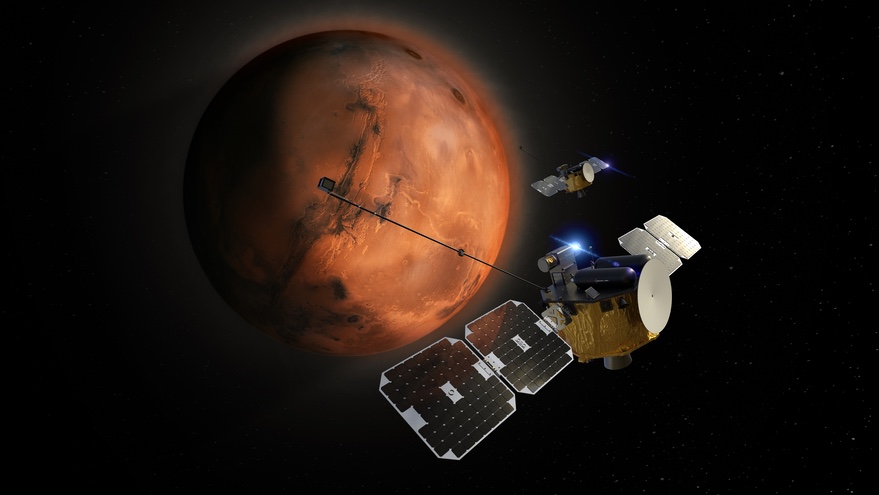WASHINGTON — A NASA-funded smallsat mission to Mars that lost its ride last year may get new life through a partnership with Rocket Lab.
Rocket Lab announced June 15 it won a contract from the Space Sciences Laboratory (SSL) of the University of California Berkeley to begin design work on a new version of the Escape and Plasma Acceleration and Dynamics Explorers (EscaPADE) mission to Mars. The two EscaPADE spacecraft will go into orbit around Mars to study the interaction of the solar wind with the planet’s atmosphere.
EscaPADE was one of three missions selected by NASA in 2019 as part of its Small Innovative Missions for Planetary Exploration (SIMPLEx) program of smallsat planetary missions. The original plan for EscaPADE was to launch as a secondary payload on the Psyche mission to the main-belt asteroid of the same name in 2022. EscaPADE would have been dropped off when Psyche made a flyby of Mars on its way to the asteroid.
However, a switch in launch vehicles for Psyche, from SpaceX’s Falcon 9 to Falcon Heavy, changed the trajectory parameters of the mission. At a preliminary design review for EscaPADE in August 2020, the agency determined that change made it “no longer viable to manifest EscaPADE as part of the Psyche mission.”
NASA delayed a review of EscaPADE, known as Key Decision Point C, to the middle of this year as it looked for a new ride. Earlier this year, there were rumors in the planetary science community that Rocket Lab would be involved in some way in a revised EscaPADE mission. Agency officials said at recent meetings that a review of EscaPADE was scheduled for this summer but offered few other updates about the mission.
The announcement suggests a broader overhaul for the mission than just a change in launch services. The EscaPADE spacecraft were originally described as spacecraft 60 by 70 by 90 centimeters in size, weighing no more than 90 kilograms each.
According to the Rocket Lab announcement, the EscaPADE spacecraft, named Blue and Gold, will be based on Rocket Lab’s Photon satellite bus. The Curie engine, used on Photon and the kick stage for its Electron rocket, will insert the spacecraft into orbit around Mars.
“This is a hugely promising mission that will deliver big science in a small package,” Peter Beck, chief executive of Rocket Lab, said in a statement. “Our Photon spacecraft for EscaPADE will demonstrate a more cost-effective approach to planetary exploration that will increase the science community’s access to our solar system for the better.”
The statement did not disclose the terms of the deal, and the original version of Rocket Lab’s press release even omitted with whom the contract was with, leading to erroneous reports that the contract was directly from NASA. Company spokesperson Morgan Bailey declined to disclose the value of the contract, but said it was “a phased contract beginning with design and progressing to a manufacturing stage” following agency reviews in June and July.
SSL did not respond to a request for comment on the contract. Missions under NASA’s SIMPLEx program have a cost cap of $55 million.
Also unclear are the launch arrangements for EscaPADE. Rocket Lab’s release said that the spacecraft will launch on a “NASA-provided commercial launch vehicle” in 2024. There are no NASA Mars missions scheduled for launch in 2024, meaning that EscaPADE would either need to find another mission with a compatible trajectory or have NASA procure a dedicated, and significantly more expensive, launch.
